NGC 6791
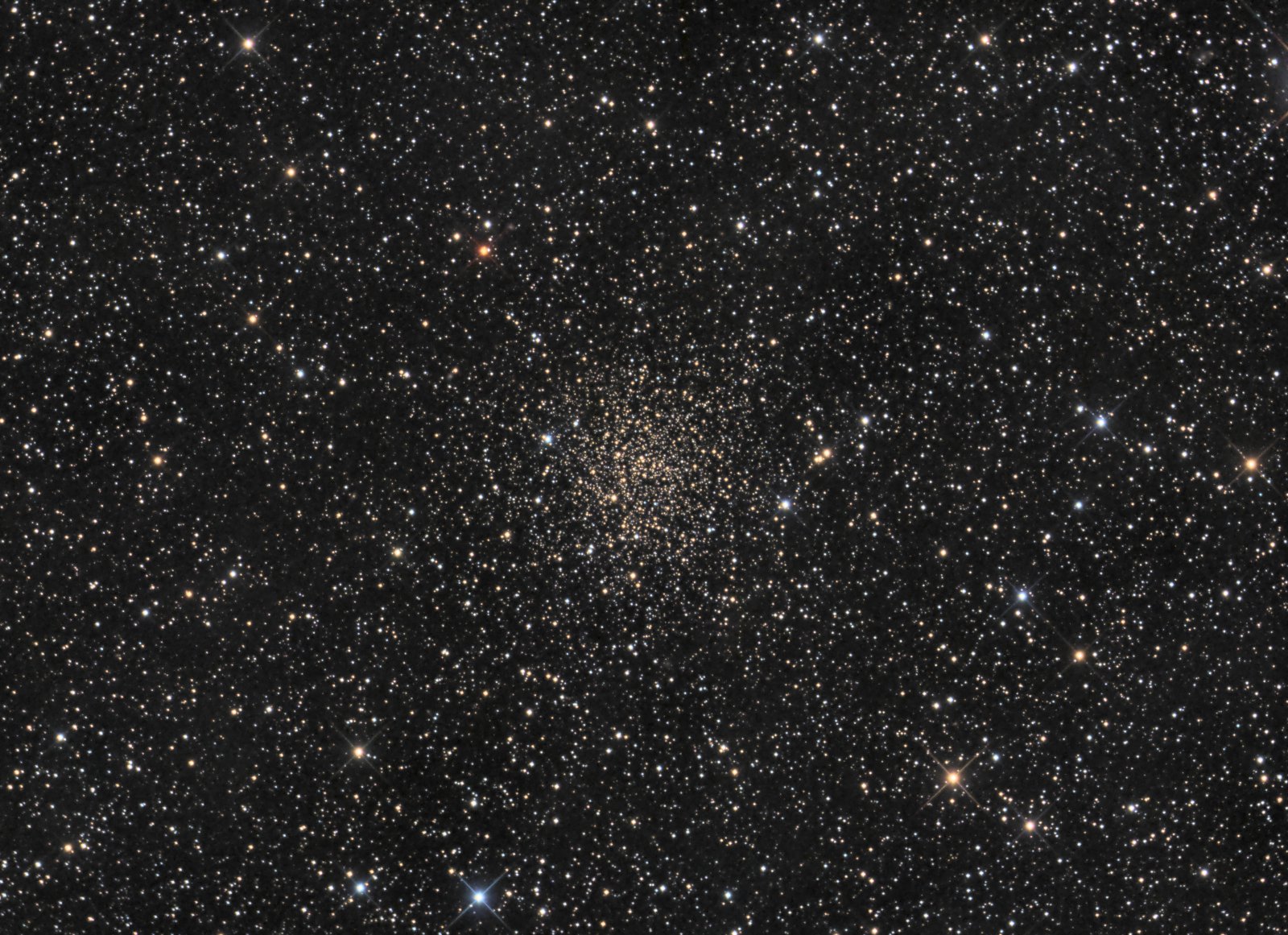 Click image for full size version
Click image for full size version
December 24, 2020, Astronomy Now!, August 2021
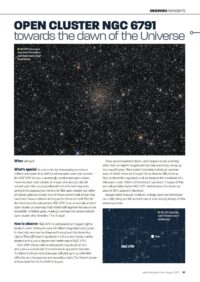 NGC 6791, in Lyra, is one of the most studied open clusters in the sky. This cluster has a mass of about 5,000 times that of our Sun. It is old, at about 8 billion years, but contains some unusual younger stars (4 and 6 billion years old). It is very metal-rich (“metals” in astronomy refers to elements other than hydrogen and helium); old open clusters are usually metal-poor. It covers an area about half the width of the Moon. Look around the image and you’ll spot a few galaxies that lie far in the background.
NGC 6791, in Lyra, is one of the most studied open clusters in the sky. This cluster has a mass of about 5,000 times that of our Sun. It is old, at about 8 billion years, but contains some unusual younger stars (4 and 6 billion years old). It is very metal-rich (“metals” in astronomy refers to elements other than hydrogen and helium); old open clusters are usually metal-poor. It covers an area about half the width of the Moon. Look around the image and you’ll spot a few galaxies that lie far in the background.
This image was taken on a night illuminated by a nearly full Moon in July 2015, and shows why I love shooting open clusters: the good ones punch right through even when the skies are bright.
Tekkies:
SBIG STL-11000M camera, Baader R, G and B filters, 10″ f/6.8 ASA astrograph, Paramount MX. Guided with QHY5 guide camera and 80 mm f/6 Stellar-Vue refractor. Acquisition, guiding and mount control with TheSkyX. Focusing with FocusMax. Automation with CCDCommander. All preprocessing and post-processing in PixInsight. Shot from my SkyShed in Guelph, Ontario. Acquired July 2-3, 2015. Good to excellent transparency, and good to very good seeing throughout acquisition.
Data Reduction and Initial Processing
Preprocessing: The WeightedBatchPreProcessing script was used to create integrated master files.
Gradient Removal: DBE was applied to each master using Subtraction.
Luminance Creation: The masters were integrated with ImageIntegration, using Average combination, weighted for noise with no pixel rejection.
Colour
Colour Balancing: Colour was balanced with ColorCalibration.
Linear Noise Reduction: MultiscaleLinearTransform was used to reduce noise in the background areas, using an internal mask to protect bright structures. Layer settings for threshold and strength: Layer 1: 5.0 0.85, 2 iterations; Layer 2: 3.5, 0.75, 2 iterations.
Stretching: HistogramTransformation was applied to make a pleasing, bright image, with background set to an intensity of approximately 0.10.
Luminance
Linear Noise Reduction: MultiscaleLinearTransform was used to reduce noise in the background areas, using an internal mask to protect bright stars. Layer settings for threshold and strength: Layer 1: 3.0 0.85, 1 iterations; Layer 2: 2.0, 0.75, 2 iterations.
Stretching: HistogramTransformation was applied to make a pleasing, bright image, with background set to an intensity of approximately 0.10.
Combining Lightness and Colour Images
LRGB Combination: The lightness image was applied to the RGB image using LRGBCombination with default settings.
Additional Processing
Nonlinear Noise Reduction: TGVDenoise was used in L*a*b* mode to reduce noise with a mask used to target the background areas and protect the stars (max. 1,000 iterations and convergence selected for both lightness and chrominance).
Final Steps: Background and star brightness, contrast, and colour saturation were adjusted in several iterations using CurvesTransformation with masks as required. ICCProfileTransformation (sRGB IEC61966-2.1; Relative Colorimetric with black point compensation) was applied prior to saving in jpg format.

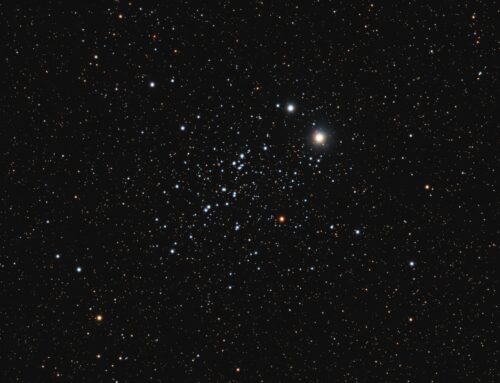
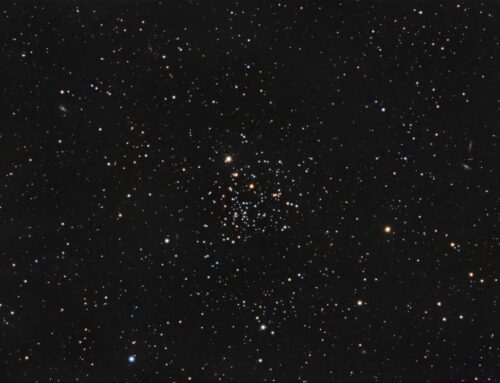

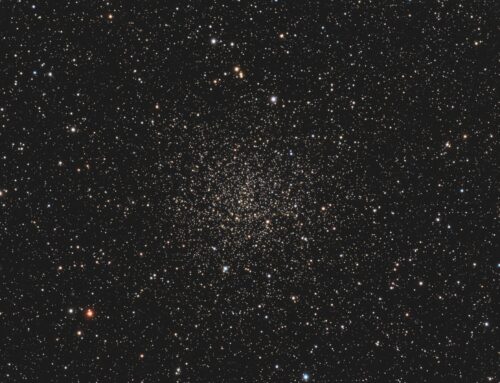
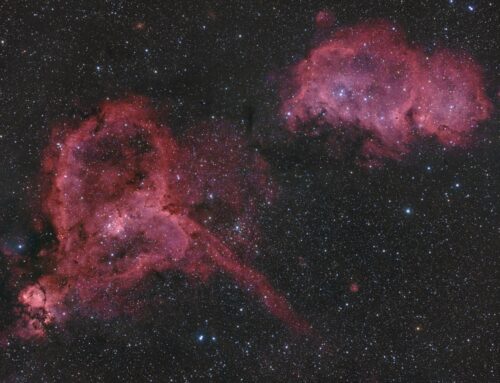
Amazing “golden cluster”, all those old stars, nice description of the cluster Ron, great image as allways.